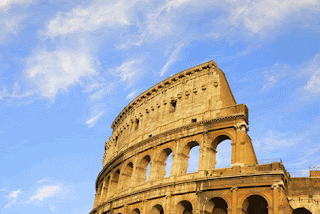Thursday, July 29, 2010
Incantato Tours Impressions: Culinary Italy
Sightseeing-Highlight: Pompeii
 Pompeii is a ruined and partially buried Roman town-city near modern Naples in the Italian region of Campania, in the territory of the commune of Pompeii. Along with Herculaneum, its sister city, Pompeii was destroyed and completely buried during a long catastrophic eruption of the volcano Mount Vesuvius spanning two days in 79 AD. The volcano collapsed higher roof-lines and buried Pompeii under 20 m (66 ft) of ash and pumice, and it was lost for nearly 1,600 years before its accidental rediscovery in 1592. Since then, its excavation has provided an extraordinarily detailed insight into the life of a city at the height of the Roman Empire. Today, this UNESCO World Heritage Site is one of the most popular tourist attractions of Italy, with approximately 2,500,000 visitors every year.
Pompeii is a ruined and partially buried Roman town-city near modern Naples in the Italian region of Campania, in the territory of the commune of Pompeii. Along with Herculaneum, its sister city, Pompeii was destroyed and completely buried during a long catastrophic eruption of the volcano Mount Vesuvius spanning two days in 79 AD. The volcano collapsed higher roof-lines and buried Pompeii under 20 m (66 ft) of ash and pumice, and it was lost for nearly 1,600 years before its accidental rediscovery in 1592. Since then, its excavation has provided an extraordinarily detailed insight into the life of a city at the height of the Roman Empire. Today, this UNESCO World Heritage Site is one of the most popular tourist attractions of Italy, with approximately 2,500,000 visitors every year.
City Facts about Vatican City

Vatican City, officially the State of the Vatican City, is a landlocked sovereign city-state whose territory consists of a walled enclave within the city of Rome, the capital city of Italy. It has an area of approximately 44 hectares, and a population of just over 800.
Vatican City is a city-state that came into existence in 1929. It is distinct from the Holy See, which dates back to early Christianity and is the main Episcopal see of 1.147 billion Latin and Eastern Catholic adherents around the globe. Ordinances of Vatican City are published in Italian; official documents of the Holy See are issued mainly in Latin. The two entities even have distinct passports: the Holy See, not being a country, only issues diplomatic and service passports; the state of Vatican City issues normal passports. In both cases the passports issued are very few.
Vatican City is an ecclesiastical or sacerdotal-monarchical state, ruled by the bishop of Rome - the Pope. The highest state functionaries are all Catholic clergymen of various nationalities. It is the sovereign territory of the Holy See (Sancta Sedes) and the location of the Pope's residence, referred to as the Apostolic Palace. The Popes have resided in the area that in 1929 became Vatican City since the return from Avignon in 1377.
Incantato Destinations: Rome, Italy
City Facts about Rome
- Rome's early history is shrouded in legend. According to Roman tradition, the city was founded by the twins Romulus and Remus on 21 April 753 BC.
- Due to this centrality on many levels, the city has been nicknamed "Caput Mundi" (Latin for "Capital of the World") and "The Eternal City".
- Its rich artistic heritage and vast amount of ancient, notably architectural and archaeological sites, contribute to the city's UNESCO World Heritage Sites.
- Rome is the third-most-visited tourist destination in the European Union.
- The city is also an important worldwide hub of the cinematic and filming industry, home to the important and large Cinecittà Studios, which saw the filming of several internationally acclaimed movies as well as television programmes.
- The Rome metropolitan area has a GDP of €109.4 billion (US$ 149.14), and according to a 2008 study, the city is the world's 35th richest city by purchasing power.
- The city hosted the 1960 Olympic Games and is also an official candidate for the 2020 Olympic Games.
- Rome is an important centre for music, and it has an intense musical scene, including several prestigious music conservatories and theatres. It hosts the Accademia Nazionale di Santa Cecilia (founded in 1585), for which new concert halls have been built in the new Parco della Musica, one of the largest musical venues in the world.
- A Jewish influence in the Italian dishes can be seen, as Jews have lived in Rome since the 1st century BCE. Examples of these include "Saltimbocca alla Romana" - a veal cutlet, Roman-style; topped with raw ham and sage and simmered with white wine and butter - and "Carciofi alla giudia" - artichokes fried in olive oil, typical of Roman Jewish cooking.
Subscribe to:
Posts (Atom)

